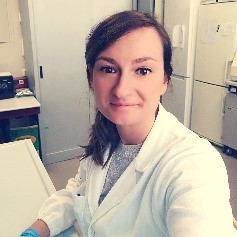Hyaluronic Acid in Tissue Inflammation and Regeneration
A special issue of Cells (ISSN 2073-4409). This special issue belongs to the section "Cell Proliferation and Division".
Deadline for manuscript submissions: closed (30 September 2021) | Viewed by 5844
Special Issue Editors
Interests: mesenchymal stem cell differentiation; biomaterials; tissue regeneration; hyaluronic acid; histology
Special Issues, Collections and Topics in MDPI journals
Interests: inflammation; hyaluronic acid; biomaterials; oxidative stress; tendons
Special Issues, Collections and Topics in MDPI journals
Special Issue Information
Dear Colleagues,
Hyaluronic acid (HA) is a large glycosaminoglycan that regulates physiological processes in most tissues. HA is a biocompatible, biodegradable, and hydrophilic macromolecule. The discovery of the HA composite’s biological roles has led to the promotion of new investigations and clinical interest in several fields, such as medicine, ophthalmology, articular pathologies, cutaneous repair, skin remodeling, vascular prosthesis, tissue engineering, and nerve reconstruction. It has been widely reported that HA and HA receptors are involved in a wide range of physiological and pathological functions and are key mediators during inflammation, healing processes, and tissue regeneration. Finally, the use of HA-based biomaterials in drug delivery systems has recently increased due to the great targeting capability of this polysaccharide on its receptor complex on cell membranes.
This Special Issue aims to present a collection of research achievements regarding hyaluronic acid and its use for regenerative medicine and pharmaceutical purposes.
Prof. Amelia Cataldi
Dr. Marialucia Gallorini
Guest Editors
Manuscript Submission Information
Manuscripts should be submitted online at www.mdpi.com by registering and logging in to this website. Once you are registered, click here to go to the submission form. Manuscripts can be submitted until the deadline. All submissions that pass pre-check are peer-reviewed. Accepted papers will be published continuously in the journal (as soon as accepted) and will be listed together on the special issue website. Research articles, review articles as well as short communications are invited. For planned papers, a title and short abstract (about 100 words) can be sent to the Editorial Office for announcement on this website.
Submitted manuscripts should not have been published previously, nor be under consideration for publication elsewhere (except conference proceedings papers). All manuscripts are thoroughly refereed through a single-blind peer-review process. A guide for authors and other relevant information for submission of manuscripts is available on the Instructions for Authors page. Cells is an international peer-reviewed open access semimonthly journal published by MDPI.
Please visit the Instructions for Authors page before submitting a manuscript. The Article Processing Charge (APC) for publication in this open access journal is 2700 CHF (Swiss Francs). Submitted papers should be well formatted and use good English. Authors may use MDPI's English editing service prior to publication or during author revisions.
Keywords
- hyaluronic acid
- inflammation
- tissue regeneration







